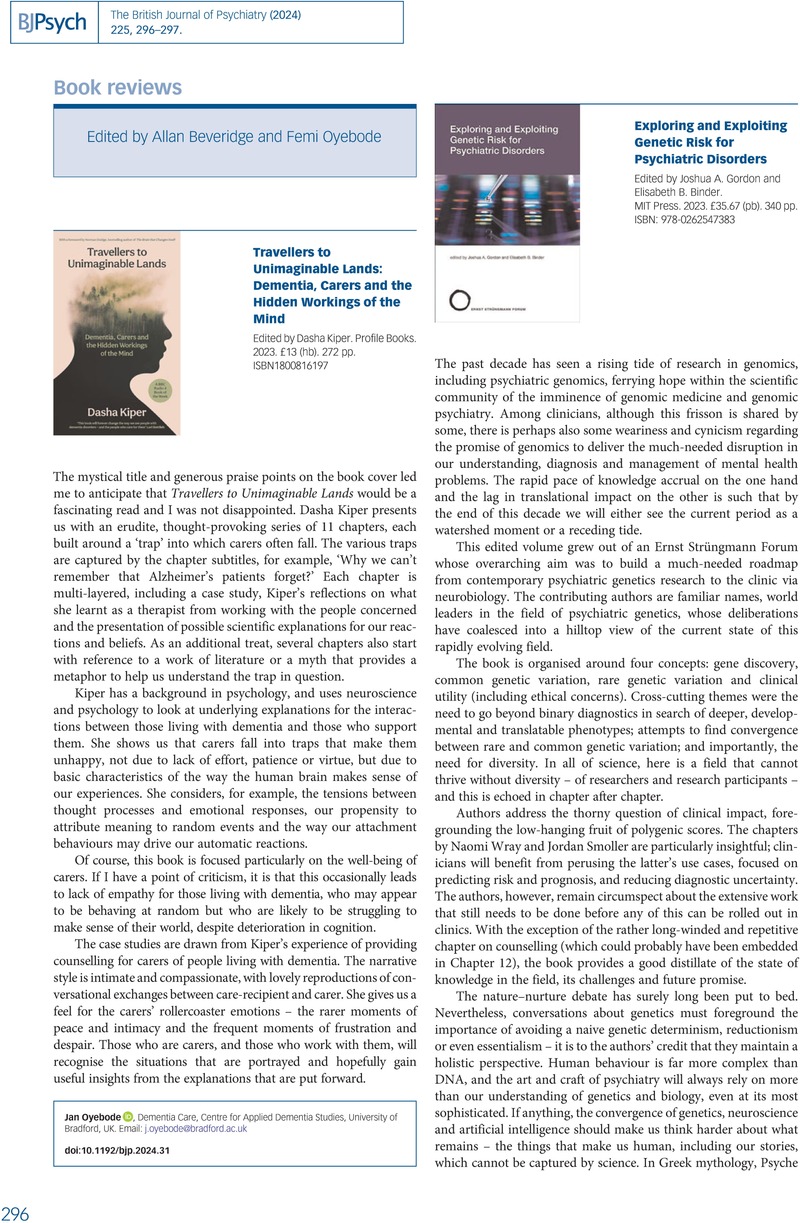No CrossRef data available.
Article contents
Exploring and Exploiting Genetic Risk for Psychiatric Disorders Edited by Joshua A. Gordon and Elisabeth B. Binder. MIT Press. 2023. £35.67 (pb). 340 pp. ISBN: 978-0262547383
Review products
Exploring and Exploiting Genetic Risk for Psychiatric Disorders Edited by Joshua A. Gordon and Elisabeth B. Binder. MIT Press. 2023. £35.67 (pb). 340 pp. ISBN: 978-0262547383
Published online by Cambridge University Press: 02 September 2024
Abstract
An abstract is not available for this content so a preview has been provided. Please use the Get access link above for information on how to access this content.

- Type
- Book Review
- Information
- Copyright
- Copyright © The Author(s), 2024. Published by Cambridge University Press on behalf of Royal College of Psychiatrists



eLetters
No eLetters have been published for this article.